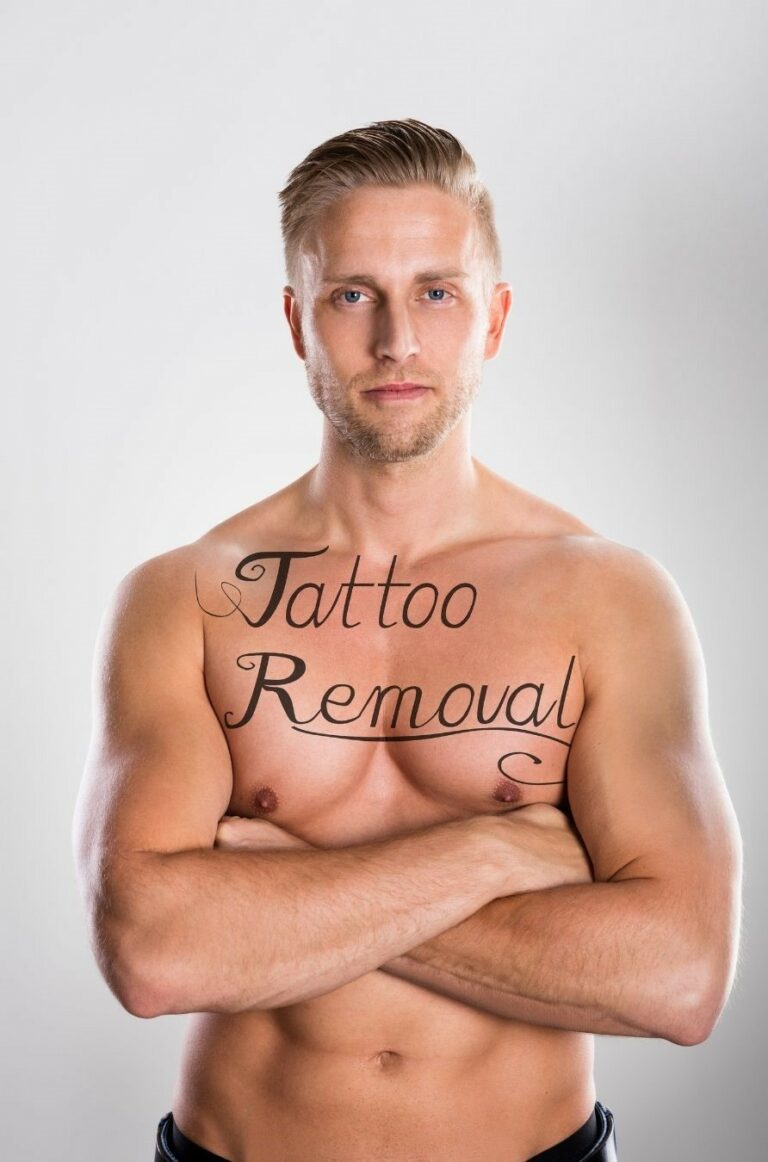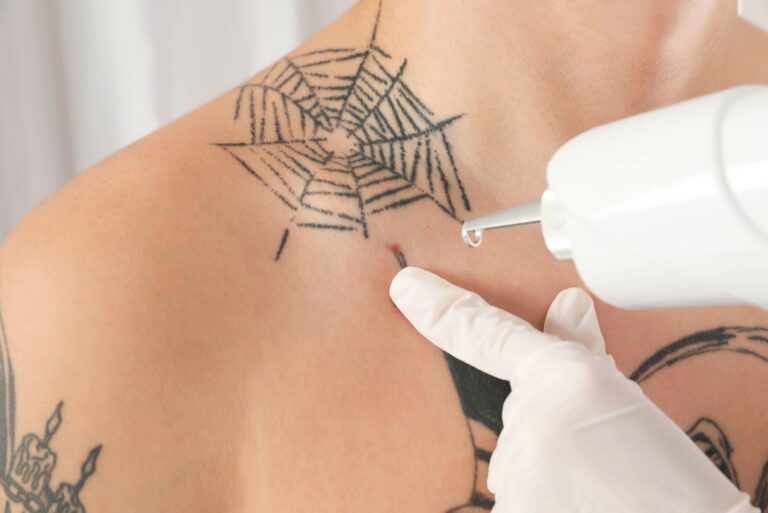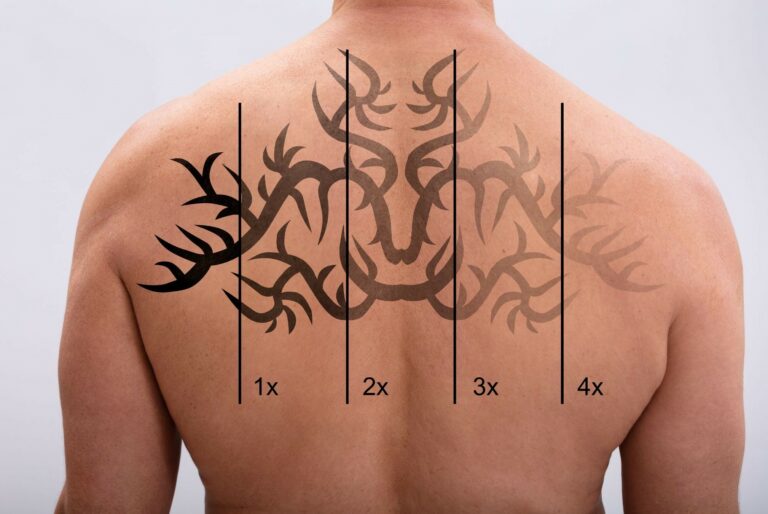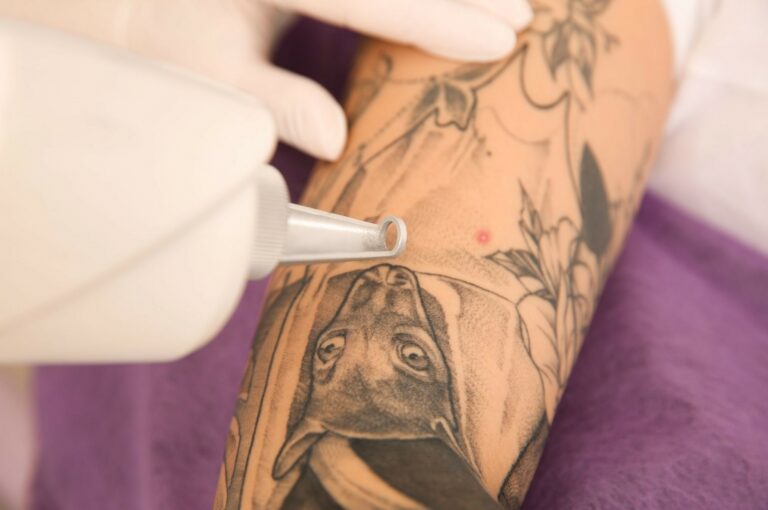Factors that Influence Tattoo Removal Success
When considering tattoo removal, it’s essential to understand the factors that can influence its success. Tattoo removal is not a one-size-fits-all process and varies depending on several factors.
Each of these factors plays a significant role in determining the success of the process. This article will delve into some of the critical factors that influence tattoo removal success.
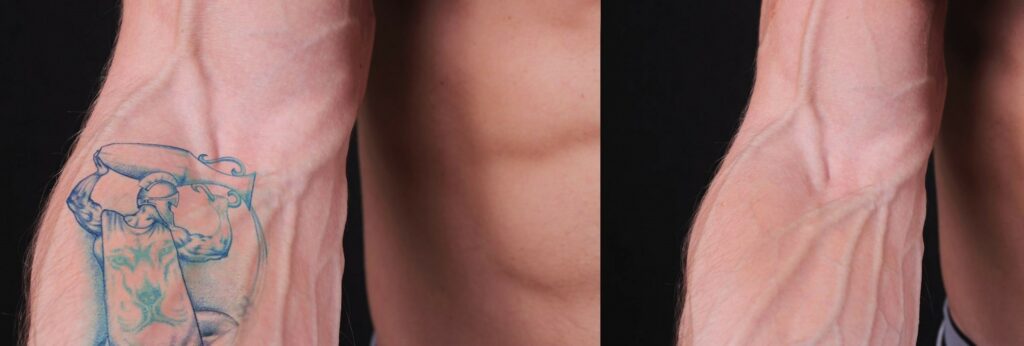
Definition of Tattoo Removal
Tattoo removal is a cosmetic procedure involving the use of laser technology to eliminate unwanted tattoos from the skin’s surface. During this process, high-intensity light beams target ink pigments in the skin, causing them to break down into smaller particles that can be absorbed by white blood cells and expelled from the body naturally. The process can take several sessions to achieve successful results, depending on various factors such as age, size, color pigments used, location on the body, and skin type.
The Importance of Factors That Influence Tattoo Removal Success
Several factors play a crucial role in determining how effectively a tattoo is removed. Understanding each factor’s impact helps both patients and professionals determine which methods are most suitable for their specific needs. Ignoring these critical elements may result in incomplete or unsatisfactory results.
Patients need to understand how different variables affect their unique situation before undergoing any tattoo removal procedures fully. Factors like age, tattoo size and location on your body all play an integral part in determining how many treatment sessions you’ll need before seeing significant results.
It’s vital to recognize that there are no guaranteed outcomes when undergoing tattoo removal procedures due to individual differences between patients’ bodies and tattoos’ compositions. However, by gaining knowledge about these critical influencing factors beforehand, you increase your chances of successful tattoo removal results significantly.
Factors that Influence Tattoo Removal Success
Skin Type and Color
Skin type and color play a significant role in tattoo removal success. The laser technology used for tattoo removal works by targeting the pigment in the ink, breaking it up into small particles that the body can naturally eliminate. However, darker skin types have more melanin, which can absorb some of the laser energy instead of focusing on the ink.
Choosing the right laser technology for a patient’s skin type and color is crucial in achieving successful tattoo removal. For example, Nd:YAG lasers are more effective on darker skin types because they have longer wavelengths that bypass melanin to target the ink pigment.
Tattoo Ink Quality and Depth
Tattoo ink quality and depth are also important factors in determining tattoo removal success. Some lower-quality inks contain materials that do not respond well to laser treatment, making them harder or even impossible to remove entirely. The depth of the ink also affects how well it responds to laser treatment.
The deeper the ink is injected into the skin, the more difficult it is to remove completely. Professional tattoos tend to be deeper than amateur tattoos as artists use different techniques for depositing ink into different layers of skin.
Age of Tattoo
The age of a tattoo also plays a role in its removal success. Older tattoos tend to be easier to remove because they have already begun to fade naturally through exposure to sunlight and other factors. Newer tattoos usually require more treatments due to their freshness and vibrancy but may still need touch-ups later as fading continues over time.
Health Conditions and Medications
Certain health conditions or medications can affect tattoo removal success rates as well. Patients with compromised immune systems may not heal as quickly from treatment sessions, which can impact overall results negatively.
Some medications can make patients more sensitive to laser treatment, increasing the risk of complications and discomfort during the process. It is essential to inform your specialist if you are taking any medications or have any underlying health conditions that could affect your tattoo removal success rate.
To summarize
Various factors can impact tattoo removal success, including skin type and color, tattoo ink quality and depth, age of the tattoo, and health conditions or medications. Choosing a qualified specialist who understands these factors is crucial for achieving optimal results. Patients should also be aware that successful tattoo removal requires commitment and patience with multiple sessions over time.
The process may take several months to a year or more depending on variables such as ink depth, quality, age of the tattoo and skin color/type. Ultimately, with careful consideration of all these factors involved in choosing an experienced technician using proper equipment will help anyone achieve much higher success rates of removing unwanted tattoos.
Techniques for Successful Tattoo Removal
Laser Technology
Laser technology is the most effective and popular method used for removing tattoos. The process involves the use of high-intensity light beams to break down the tattoo ink particles into smaller fragments.
The body’s immune system then naturally eliminates these fragments from the skin over time. There are three common types of lasers that are used for tattoo removal, which include Q-switched Nd: YAG, Alexandrite, and Picosecond lasers.
Types of Lasers Used for Tattoo Removal
The Q-switched Nd: YAG laser is one of the most commonly used types of lasers in tattoo removal and is effective for treating dark pigments such as black and blue ink. The Alexandrite laser is best suited for removing green ink, while Picosecond lasers are ideal for removing multicolored tattoos. It’s important to note that different skin types respond differently to each type of laser, so it’s important to consult with a professional to determine which type will work best for your specific tattoo.
How Lasers Work to Remove Tattoos Effectively
Lasers work by targeting the pigment in the tattoo ink with high-intensity light beams that cause heat energy to break down these particles into smaller fragments that can be cleared away by your body’s immune system. Multiple treatments may be required depending on factors such as the size and color complexity of the tattoo, location on your body, skin tone, or sensitivity.
Preparation Before Treatment & Tips For Aftercare To Ensure Optimal Results
To prepare properly before the treatment session:
- Avoid sun exposure at least two weeks before treatment.
- Do not apply any creams or makeup on or around the area being treated.
- Avoid waxing, plucking, or shaving hair on areas being treated 24-48 hours before.
After your tattoo removal treatment session, follow these tips for optimal results:
- Ice the area treated to cool down your skin and reduce swelling.
- Apply moisturizer or ointment recommended by your professional to keep the treated area moist and promote healing.
- Avoid exposing the treated area to excessive heat or sunlight for at least a week after treatment.
- Wear clothing that does not rub against or irritate the treated area.
Laser technology is an increasingly popular method for removing tattoos. It is effective and offers various types of lasers that suit different skin types, and color pigments as well as allows patients to customize their treatment plan according to their needs.
However, it is important that you consult with a professional before undergoing tattoo removal treatment in order to determine which type of laser will work best for you. By following proper preparation and aftercare routines, you can ensure optimal results from your tattoo removal treatments.
Challenges in Tattoo Removal Success
Possible complications during or after treatment
Tattoo removal is a safe procedure when done by a qualified professional. However, there are still potential risks involved. The most common side effect of tattoo removal is skin irritation, including redness, swelling, and blistering.
Scarring can also occur if the skin is not properly cared for after treatment or if the laser used is too strong. In rare cases, infection and pigmentation changes may occur.
The risk involved in attempting DIY methods
Attempting to remove a tattoo at home using DIY methods such as salt scrubs or creams can be dangerous and ineffective. These methods can cause scarring, infection, and pigment changes without removing the tattoo completely.
Home remedies also lack the precision that comes with professional equipment which leads to inconsistent results.
Costs associated with tattoo removal
The cost of tattoo removal varies depending on factors such as size, color, age of the tattoo as well as location, and experience of the practitioner performing the procedure. Factors like having tattoos that cover large areas or thick lines require more treatments than smaller pieces which means higher costs overall.
Conclusion
Removing a tattoo can be a complicated process that requires careful consideration and patience throughout its entirety. Factors influencing success include skin type and color pigments in ink quality/depth/fading age of tattoos etc., nevertheless there are some complications such as potential scarring from improper care post-treatment sessions with lasers being too strong leading to additional issues like infections or pigment changes post-removal. While it may seem cheaper to attempt DIY methods for removal or try lighter treatments hoping for instant gratification but this approach increases risks while decreasing chances of success.
Ultimately though, if you are committed to removing your unwanted ink designs then finding an experienced professional who uses modern technology will yield the best results. With careful consideration, patience, and the right equipment, tattoo removal is a safe and effective way to get rid of unwanted ink.
References
Second Degree Skin Burn with Garlic and Table Salt – PMC (nih.gov)
Laser Tattoo Removal – StatPearls – NCBI Bookshelf (nih.gov) https://www.ncbi.nlm.nih.gov/books/NBK442007/
Medical Disclaimer:
The information provided on this website regarding tattoo removal techniques is for general informational purposes only. It is not intended to be a substitute for professional medical advice, diagnosis, or treatment. Always seek the advice of a qualified healthcare professional regarding any medical condition or concerns, including tattoo removal.
The content presented on this website should not be interpreted as endorsing or promoting any specific tattoo removal technique, product, or service. The effectiveness, safety, and suitability of tattoo removal methods can vary depending on individual circumstances and factors. Therefore, it is crucial to consult with a medical professional or qualified specialist before making any decisions or embarking on any tattoo removal procedure.
The website does not guarantee the accuracy, completeness, or reliability of the information provided. Reliance on any information from this website is solely at your own risk. The website and its owners, authors, and contributors shall not be held liable for any damages or consequences arising from the use of the information provided.
It is important to note that medical practices and standards may change over time, and the information provided on this website may not always reflect the most up-to-date research or guidelines. Therefore, it is recommended to consult with healthcare professionals or reputable sources for the latest information and advice on tattoo removal techniques.
If you experience any adverse reactions, complications, or concerns during or after a tattoo removal procedure, promptly seek medical attention. Only a qualified healthcare professional can assess your specific situation and provide appropriate advice and treatment.
By using this website, you acknowledge and agree to the above disclaimer, and you understand that the website and its owners, authors, and contributors cannot be held responsible for any decisions or actions taken based on the information provided.


